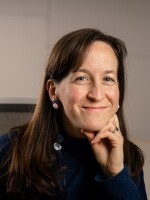Air pollution in the San Joaquin Valley has improved dramatically over the last few decades, partly thanks to a set of sweeping clean air laws passed in the early 2000s. Over the last few years, however, one major polluting practice has risen steadily. And although it’s unclear if the increase has had an impact on air quality, advocates are concerned it will if the trend continues. We report from a family farm outside Fresno on what’s being done about open agricultural burning.
Because of the nature of his job, John Nale sometimes loses sleep over the weather. It happened a few weeks ago. “I’m sitting in bed, you hear the wind noise, and I’m just praying to God,” he says. All Nale could think about was the wind gusting through his grapevines and almond trees north of Kerman.
Sure enough, his fears were warranted. “We lost 21 trees in this orchard,” he says. “We’ll be coming through here and cleaning them up and sawing them up and pulling them out.”
He didn’t just lose 21 trees’ worth of almonds; he also now has to clear his land. When he started farming in the 1990s, getting rid of that material would’ve been simple. “We’d chop up the limbs, we’d drag the limbs, we’d lay them across the row, we’d push these things into a little pile, and we’d light that match,” he says.
But today, Nale can’t do that so easily. A law passed in 2003 made open ag burning illegal without a permit. Those permits are costly and can take months to process.
By 2011, open ag burning had dropped by 80 percent. It was no longer the Valley’s second largest source of particulate matter.
And yet, despite no change in the law, the air district has allowed the practice to quadruple in the last four years. Valley growers burned more in 2017 than they did in 2005, the year the law went into effect.

Air regulators blame a lack of other options. Air quality advocates see regulators neglecting their responsibilities. But growers see burning as a solution to a desperate need to clear land. “If you have a mortgage payment, and that is your income, you need that producing,” Nale says. “I need to get it back in production as fast as I can.”
The most common reason for burning is the removal of vineyards and orchards. Imagine the amount of biomass in hundreds of acres of pulled-up grapevines.
Getting a burn permit from the San Joaquin Valley air district isn’t easy. Growers need to let their material dry for weeks or months. They need to show they can’t afford the other options. Then, deputy control officer Morgan Lambert says the district has a quota for how many acres can burn on any given day—and that, only on clear days. “I think a lot of times that's misunderstood—people think people can burn whenever they want and however much they want to burn,” he says, but “it’s very strictly controlled and very strictly managed.”
For a while, the most promising alternative to ag burning was to run the trees through a wood chipper and haul the chips off to biomass incinerators, which burn the chips to produce electricity. But in the last decade, many nearby biomass facilities have shuttered, and those still open are overloaded with dead trees from the Sierra. “Unfortunately we've come to almost like a perfect storm of all these different circumstances that've come into effect over the last couple of years,” Lambert says.
For a time, the air district had been considering loosening its restrictions on ag burning. But Lambert said they changed course after a summit on burning alternatives last fall. “The action that our governing board has taken has been to not roll back those restrictions and to focus our efforts moving forward on actually trying to advance technology and to bring resources to help incentivize newer technologies.”
Still, Dolores Barajas-Weller of the Central Valley Air Quality Coalition argues the air district is too lenient in granting burn permits. “I don’t have a lot of confidence in the smoke management practices from the air district based on what we’ve seen,” she says.
She argues the air district should be working harder to incentivize pilot projects on dealing with ag waste.
Tom Frantz agrees. He’s an almond grower and air quality advocate in Shafter. “There’s an alternative for that biomass, and that’s put it back into the soil,” he says.
He says: Think compost. Once those dead trees have been chipped, growers can work those chips back into their fields. “It’s the simplest, most obvious thing you could do, and it’s extremely beneficial to the soil and the new trees you plant in that soil,” he says.
To John Nale, even that option isn’t easy. He doesn’t have the equipment to disc the chips into his soil, so he has to hire contractors—and wait months for them. Still, he understands what’s improved over the last few decades—and what’s at stake.
“I can see the coastal mountain range now way more than I used to,” he says. “Way more.”





